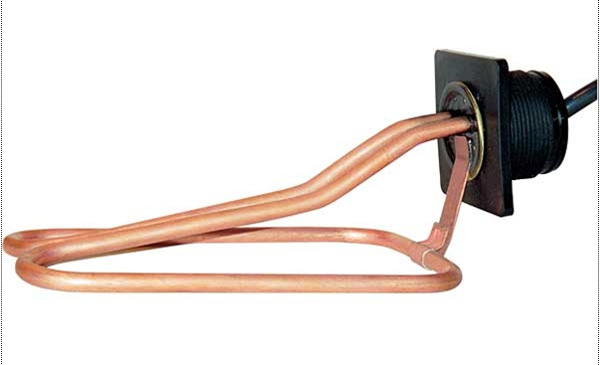
In a large proportion of the country, horse owners are faced with cold winter temperatures that turn water into ice. Maintaining wet water in the face of frigid temperatures is important for a horse’s health, especially to prevent impaction colic. Having to break ice on a stock tank several times a day is a necessary chore to ensure that your horse can get a good drink. But there is a better option: a tank heater.
There are important features to consider when setting up a tank heater in your stock tank.
- The electrical cord(s) should be sheathed in plastic PVC or metal pipe to prevent a horse from chewing on the cord or stepping on it, especially with horseshoes, and risking electrocution. To put it out of reach may require elevating the cord high up, running it underground or sheathing it in conduit.
- Make sure that the extension cord is of the proper and heavy enough gauge to run the necessary current.
- Electrical outlets to which the heater is plugged in should be similarly shielded from curious horse mouths and teeth.
- Use a ground fault interrupter (GFI) for your plug-in.
- The tank heater should be well-grounded to prevent electrical shock that might discourage a horse from drinking.
- The type of tank heater that immerses the heating element as far to the bottom of the tank as possible is safer than the floating type of de-icer. Immersed and clamped to the side of the tank makes it less likely for a horse to grab it and throw it on the ground, potentially starting a fire. Even a floating heater within a cage poses a temptation to curious and playful horses.
You might prefer to purchase a heater that has a thermostatically controlled shutoff that only heats below a certain temperature–this can be cost saving by not consuming unnecessary electricity.

An insulated water tank also helps cut down on expenses. At the very least, it helps if you partially cover the top of the tank so all the heat doesn’t just radiate away into the air. Some people think metal tanks are safer to use than plastic since some plastic tanks have been known to catch on fire or melt.
Solar heaters are another option and one that eliminates the need for electrical outlets and cords. Before you go this route, consider how much sun will shine on it during the winter–your geographic location and particular property orientation determines its usefulness.

Keep in mind that some horses are more sensitive to “stray” current than others. If you have a horse that is reluctant to drink from a heated tank, check the water with a volt meter. If that shows anything, you might either have to unplug the tank for a few hours each day, ground the water tank (ask your electrician about the best way to do this), water that horse separately or replace your tank heater. Standing water or ice around water tanks (especially if horses are wearing shoes) has been known to increase a horse’s sensitivity to stray electrical current in the water from an electric heater.
Also, if a horse is not drinking from a stock tank, don’t just stick your hand in the water to see if you feel the charge, then assume everything is fine. Remember, you are probably wearing boots (perhaps even rubber boots) that don’t conduct electricity as well as a horse standing on damp, wet or frozen ground in shoes or barefoot. (Editor’s Note: Also beware of sticking your hand in automatic waterers as one farm manager got a good shock from a heated waterer that had a short!)
Here is a helpful online guide from Farm Innovators about stock tank de-icers (heaters). For more information from this company’s tank de-icing products visit FarmInnovators.com.


